musical resources, music lessons and courses
How to Read a Music Chart: Finding the Right Tool for Your Group 🎵
🎶 What type of music chart works best for your group? In this article, we explore different ways to organize music on a chart, from traditional sheet music to lead sheets, chord charts, and structural outlines. Learn about the pros and cons of each format and how to choose the best one based on the musicians’ level and needs. The key? Everyone in the group using the same system! 📖🎵
SIGHT READING
Abel Serra Quintana
2/22/20254 min read
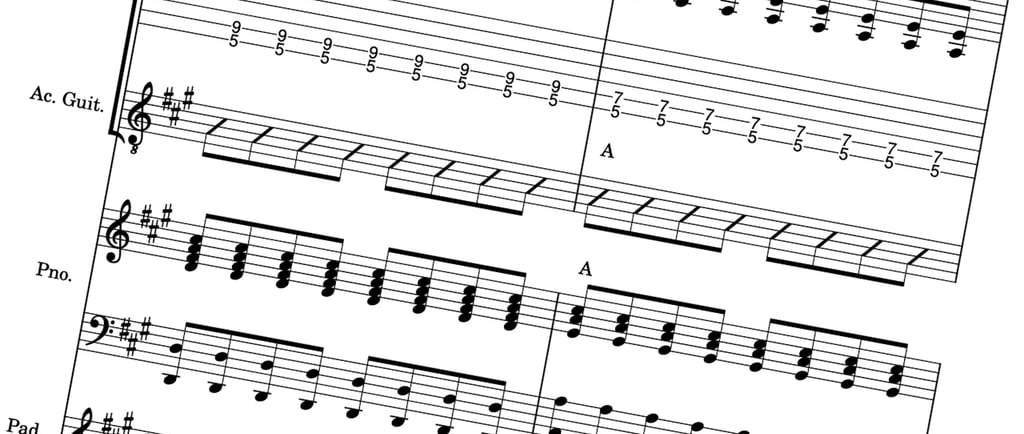

When playing in a group, having a clear and shared chart is essential. But is traditional sheet music with measures and notation always necessary? Not really. There are many ways to organize musical information, and all can be useful—as long as everyone in the group follows the same system.
In this article, we’ll explore different types of music charts, both musical and structural, and how to choose the best one based on your group’s needs.
What Is a Music Chart and Why Use One? 📜
A music chart is simply a written representation of how a piece should be played. Its purpose is to organize the music in a clear way for all musicians.
Depending on the type of music and the musicians’ level, the chart can be highly detailed or more schematic. The key is that it is consistent and easy for everyone in the group to follow.
Types of Music and Structural Charts 🎼
🔹 Traditional Sheet Music (Instrumental Score)
✅ What is it? A fully notated sheet with standard music notation, including measures, rhythms, dynamics, and specific indications for each instrument. This is the standard format used in orchestras, symphonies, and many classical and contemporary ensembles.
⭐ Pros:
• Provides all necessary details for precise performance.
• Each musician knows exactly what to play.
📌 Cons:
• Requires music-reading skills.
• Can be difficult to read quickly in modern or improvisational settings.
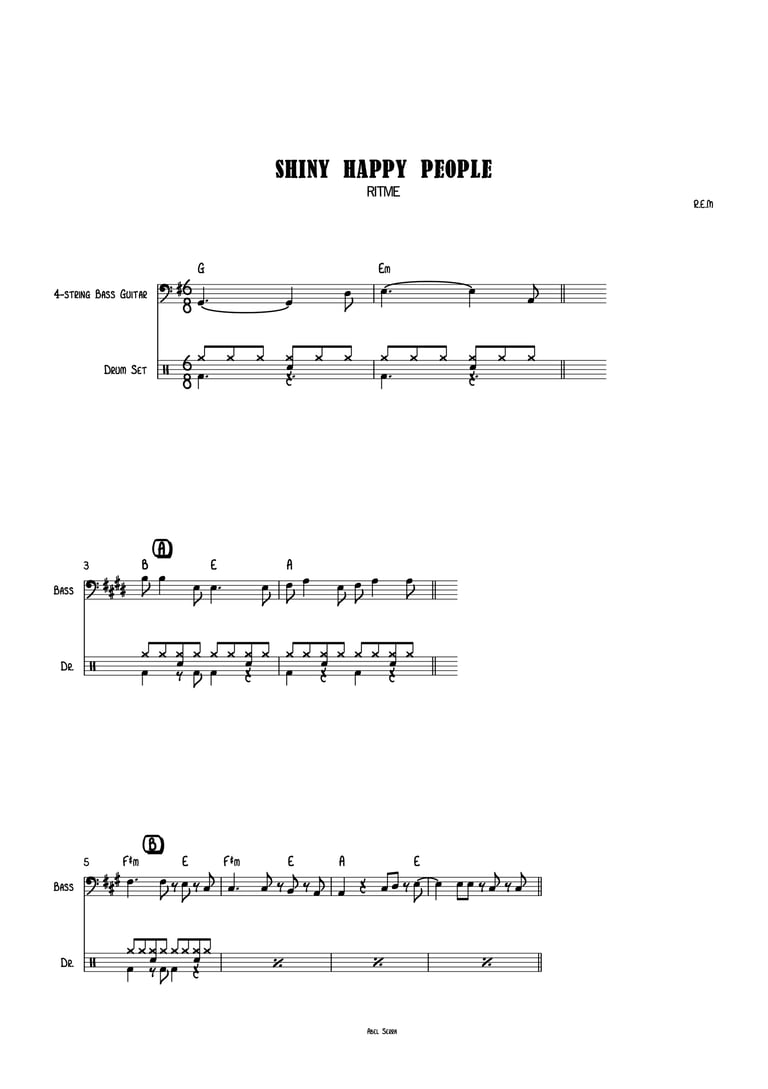

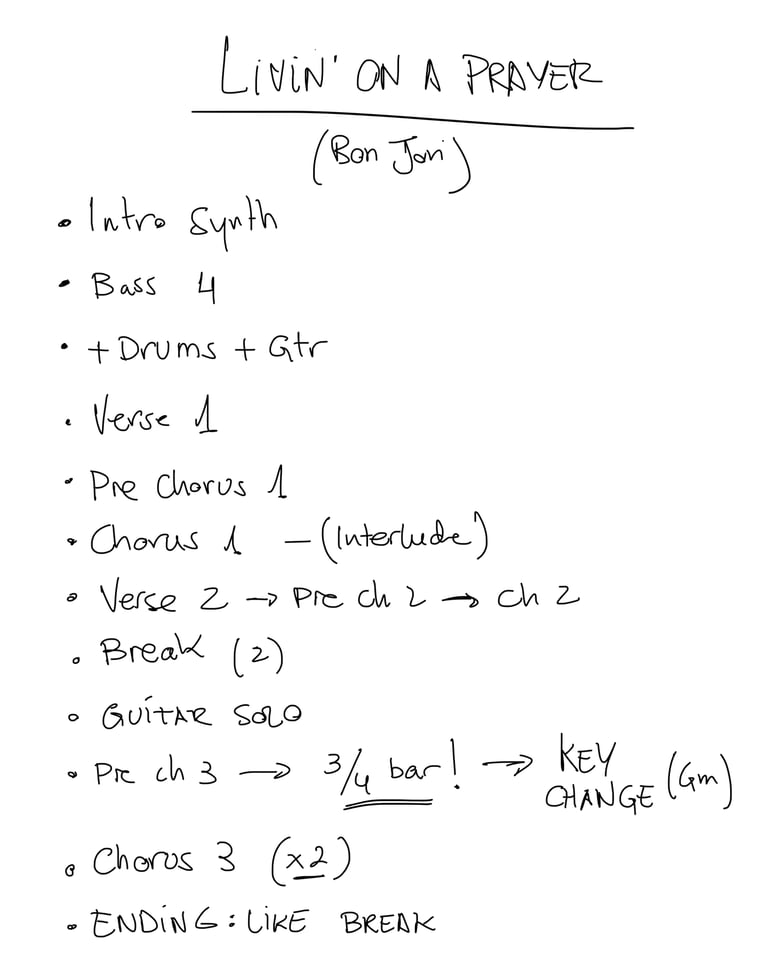

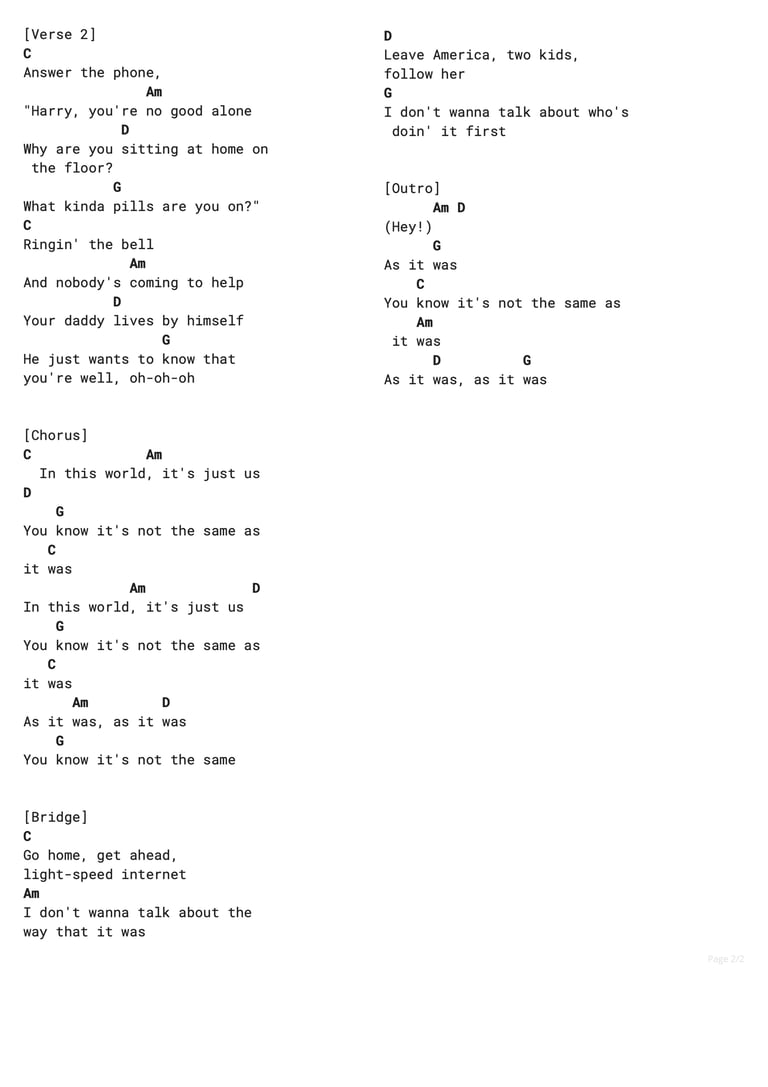

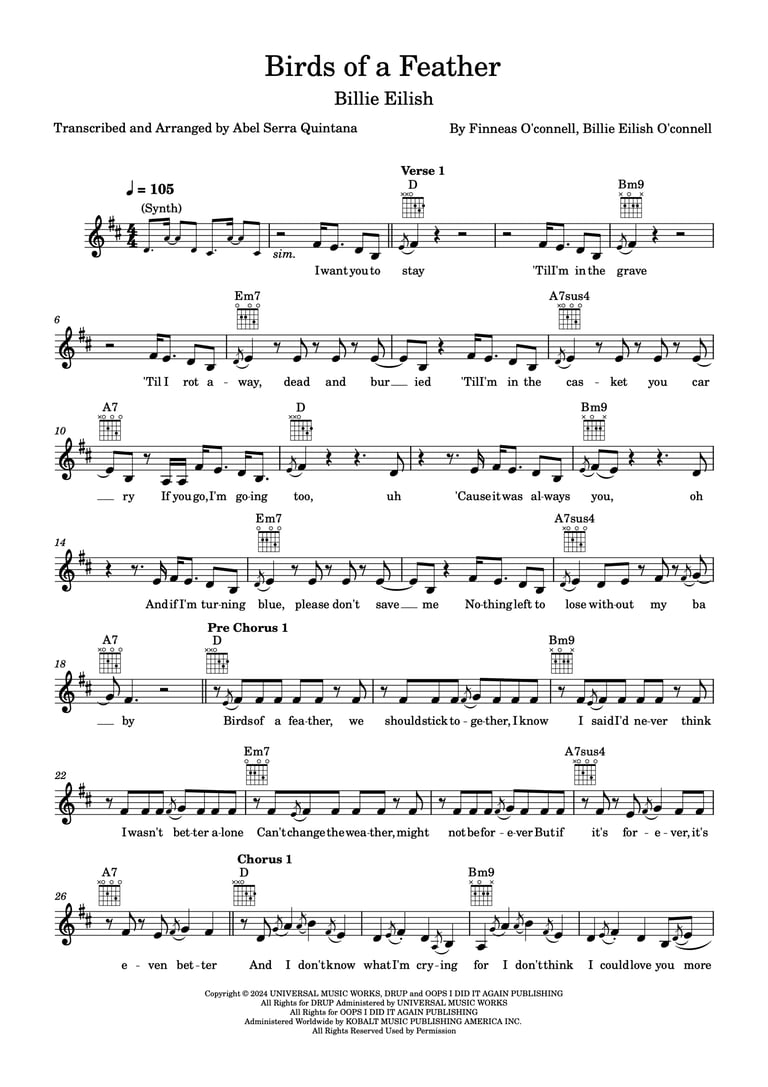

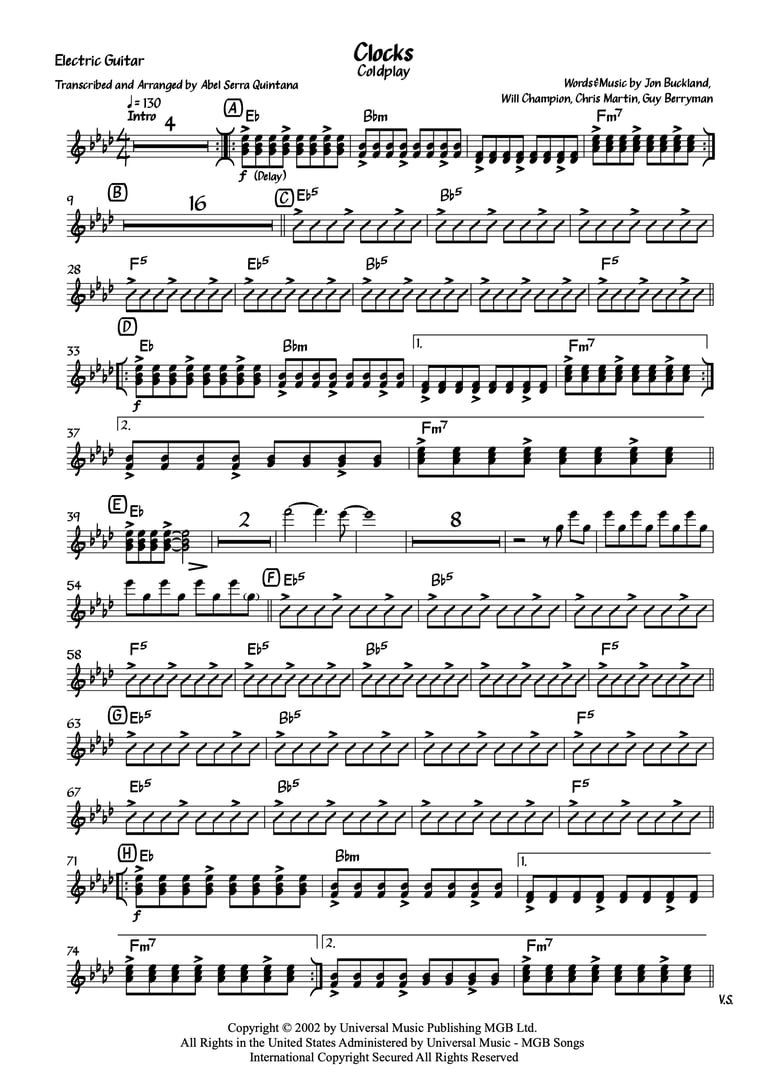

🔹 Lead Sheet
✅ What is it? A simplified chart that includes the main melody, chords (harmony), and, in some cases, key instrumental phrases or riffs. This is the standard format found in Real Books, commonly used in jazz and contemporary music.
⭐ Pros:
• Provides a clear reference without excessive details.
• Allows flexibility and improvisation.
📌 Cons:
• Does not specify how each instrument should play, which can lead to varied interpretations.
🔹 Chord & Lyric Chart
✅ What is it? A sheet with the lyrics of the song and chords written above the places where they change. Common in folk, pop, and rock music.
⭐ Pros:
• Easy to use for singers and musicians who play by ear.
• Ideal when the melody is already known, and only the chord progression needs to be remembered.
📌 Cons:
• Does not provide rhythmic or melodic details.
• Can cause confusion if not clearly structured (for example, if it doesn’t indicate how many times a chord or section should be repeated).
🔹 Structural Chart (Sections & Parts)
✅ What is it? A simplified outline showing the different sections of a song (Intro, Verse, Chorus, Bridge, Outro…), indicating which instruments play in each section.
⭐ Pros:
• Helps musicians understand the song’s structure at a glance.
• Works well for musicians of all levels and is great for rehearsals.
📌 Cons:
• Does not provide specific musical details (notes, rhythms).
• Each musician needs to fill in the gaps with memory or personal notes.
🔹 Phrase or Motif Chart
✅ What is it? A minimalistic outline that only highlights key phrases or motifs of the piece, such as a guitar riff, a bassline, or a drum fill.
⭐ Pros:
• Helps remember key melodic lines and changes.
• Ideal for improvisers or experienced musicians.
📌 Cons:
• May be insufficient for musicians who need more structured information.
Which Music Chart Is Best for Your Band? 🎶
It depends on several factors:
• The musicians’ ability to read sheet music → If everyone can read standard notation, a full score may be the best choice. If not, a chord chart or structural outline may work better.
• The style of music → In a jazz band, a lead sheet or structural chart with chords might be enough. In an orchestra, a detailed score is necessary.
• Ease of use during live performances → In a concert, an overly detailed chart might be a distraction, whereas a simple outline could help musicians follow along easily.
The key is for everyone to use the same system! 📌 It doesn’t matter which one, as long as it is clear and understandable for all group members.
Personal Notes: Every Musician Can Adapt the Chart 📝
Regardless of the type of chart used, musicians can add personal annotations:
✅ Dynamics or intensity markings.
✅ Visual cues for important changes.
✅ Reminders for solos or specific entries.
Many musicians create their own notes based on the general chart to have a more personalized reference.
A Good Chart Is One That Works for Everyone 🎼
There is no single correct system. The important thing is that the chart is clear and useful for the entire group. Whether it’s detailed sheet music, a lead sheet, or a simple chord outline, communication and consistency are the keys to a successful musical performance.
In the next post, we’ll explore how to effectively interpret a music chart in practice. See you soon! 🎵✨
Abel Serra MUSIC
Musical solutions tailored for musicians, schools, and bands
Phone and email
Contact
info@abelserramusic.com
© 2025 Abel Serra Music. All rights reserved.
